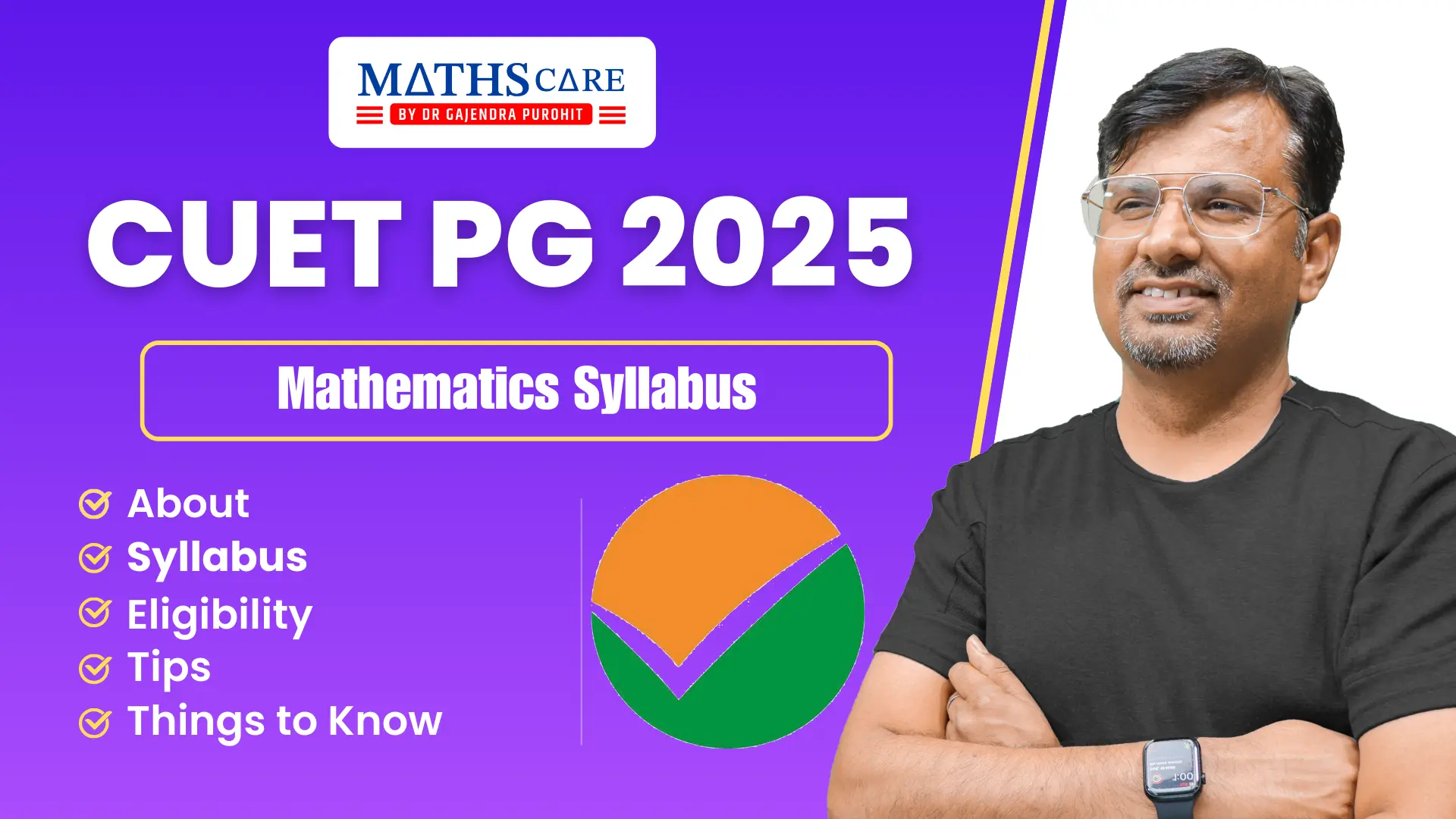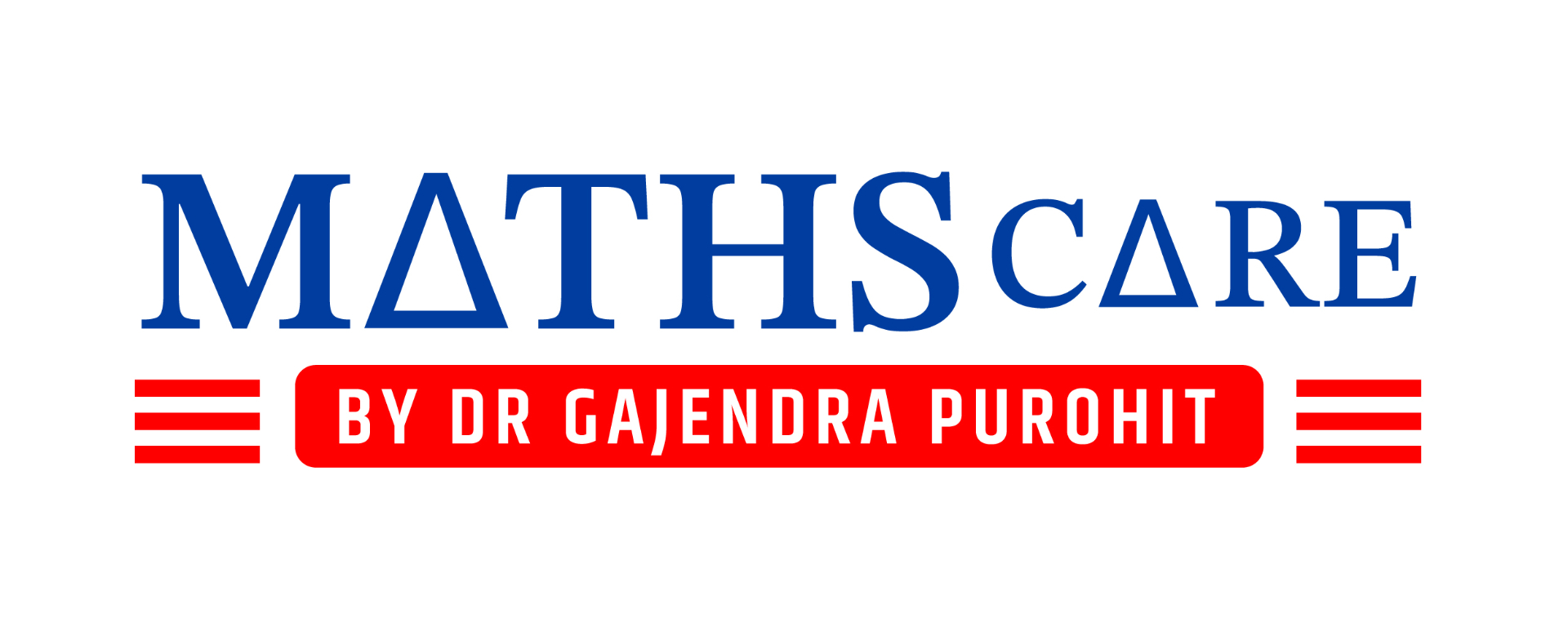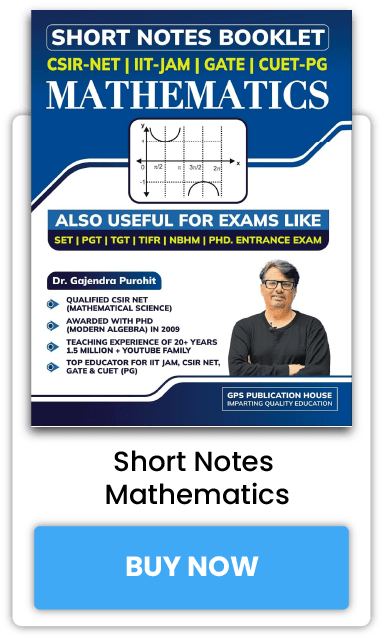CUET PG Mathematics Syllabus 2025
CUET PG 2025 The CUET PG exam is a national-level entrance test conducted for admission to postgraduate programs in various universities across India. Mathematics (SCQP19) is one of the key subjects in this exam, requiring candidates to have a strong foundation in core mathematical concepts. Since the subject encompasses a vast syllabus, candidates must develop a well-structured preparation strategy to cover all topics efficiently. Understanding the detailed syllabus, exam pattern, and preparation strategies is essential for success. This blog provides an in-depth guide to the CUET PG Mathematics syllabus, paper structure, marking scheme, and tips for effective preparation. Additionally, aspirants will learn about the best methods to approach different sections and optimize their performance in the exam.

About CUET PG Mathematics Exam
The Common University Entrance Test (CUET) PG is conducted by the National Testing Agency (NTA) to facilitate admissions to various postgraduate programs in central, state, and private universities. Mathematics (SCQP19) is designed for candidates aspiring to pursue advanced studies in mathematics, research, or teaching professions. The exam is structured to test conceptual understanding, problem-solving skills, and analytical abilities across various mathematical domains. A thorough grasp of theoretical and applied mathematics is essential for candidates to excel in this test. The CUET PG Mathematics exam also evaluates candidates on their ability to integrate mathematical theories with real-world applications, making it crucial to develop both problem-solving skills and conceptual clarity. Candidates must prepare systematically to excel in this highly competitive exam, ensuring they dedicate enough time to practice and revision.
CUET PG Mathematics Syllabus
The syllabus for CUET PG Mathematics (SCQP19) covers a wide range of topics from algebra, analysis, calculus, complex analysis, and applied mathematics. Below is a detailed breakdown of the key areas:
Algebra
Groups, subgroups, Abelian and non-Abelian groups, cyclic groups, permutation groups
Normal subgroups, Lagrange’s Theorem, group homomorphisms, and quotient groups
Rings, subrings, ideals, prime ideals, maximal ideals, fields, and quotient fields
Understanding these topics is crucial for dealing with abstract structures in mathematics. The study of groups and rings forms the foundation for advanced topics such as topology and field theory. Mastering algebra requires problem-solving abilities and a deep understanding of mathematical proofs. Candidates should practice problems from well-known textbooks and previous years’ question papers to strengthen their grasp of the subject.
Linear Algebra
Vector spaces, linear dependence and independence, basis, dimension
Linear transformations, matrix representation, range space, null space, rank-nullity theorem
Determinants, eigenvalues, eigenvectors, Cayley-Hamilton theorem
Types of matrices: symmetric, skew-symmetric, Hermitian, skew-Hermitian, orthogonal, unitary
Linear algebra plays a crucial role in various applications, from physics to computer science. The study of eigenvalues and eigenvectors is fundamental in solving differential equations and performing matrix decompositions. Candidates must ensure they develop a strong conceptual understanding of vector spaces and linear transformations. Practicing matrix operations and solving system-of-equation problems will significantly enhance problem-solving skills.
Real Analysis
Sequences and series, convergence and divergence, monotonic sequences
Convergence criteria, Cauchy sequences, absolute and conditional convergence
Tests for series convergence: comparison test, ratio test, root test, Leibnitz test
Functions of one and two variables, limits, continuity, differentiation
Rolle’s theorem, Cauchy’s theorem, Taylor’s theorem, power series, and their properties
Real analysis is essential in understanding the fundamental principles of calculus and mathematical reasoning. This area deals with the behavior of functions, their continuity, and differentiability. Candidates must focus on understanding the concept of limits and continuity before moving on to differentiation and integration. A strong command over series and sequence convergence tests is essential for solving analytical problems efficiently.
Complex Analysis
Functions of a complex variable, differentiability, analyticity, Cauchy-Riemann equations
Power series, line integrals, Goursat’s theorem, Cauchy’s integral theorem and formula
Morera’s theorem, Liouville’s theorem, Fundamental Theorem of Algebra
Harmonic functions and their applications
Complex analysis extends calculus into the complex plane, allowing for deeper exploration of function theory. The subject is fundamental in areas such as fluid dynamics, quantum mechanics, and engineering. Understanding Cauchy’s integral formula and the concept of analytic functions will help candidates tackle various problem types in this area. Practicing contour integration and theorem applications will strengthen their ability to work with complex functions.
Integral and Differential Calculus
Definite integrals, fundamental theorem of integral calculus
Double and triple integrals, change of order of integration, surface areas, and volume calculations
First-order differential equations: Bernoulli’s equation, exact differential equations, integrating factors
Higher-order linear differential equations with constant coefficients, method of variation of parameters
Cauchy-Euler equation, orthogonal trajectories
Integral and differential calculus are widely used in engineering, physics, and economics. Mastery of these concepts enables candidates to solve practical problems related to rates of change and accumulation. Candidates should focus on understanding integration techniques, the applications of differentiation, and solving differential equations efficiently. Practice is key to mastering this section.
Paper Pattern and Marking Scheme
The CUET PG Mathematics exam follows a structured pattern designed to assess candidates across various mathematical disciplines. The key aspects of the exam pattern are as follows:
Number of Questions: 75 multiple-choice questions (MCQs)
Mode of Examination: Computer-Based Test (CBT)
Language: Bilingual (English and Hindi)
Marking Scheme:
Correct answer: +4 marks
Incorrect answer: -1 mark
Unattempted question: 0 marks
Candidates should manage their time effectively to attempt all questions while minimizing errors due to negative marking. Since the exam is time-constrained, developing efficient problem-solving techniques will help in answering accurately within the given duration.
Exam Tips
A well-structured preparation plan is essential for scoring high in the CUET PG Mathematics exam. Here are some effective preparation tips:
Understand the Syllabus: Go through the official syllabus and focus on high-weightage topics.
Refer to Standard Books: Use textbooks like Linear Algebra by Hoffman & Kunze, Real Analysis by Rudin, and Abstract Algebra by Dummit & Foote.
Practice Previous Year Papers: Solving past papers helps in understanding question trends and improving speed.
Attempt Mock Tests: Simulate real exam conditions with timed mock tests to enhance accuracy and time management.
Revise Regularly: Keep revising key formulas, theorems, and concepts to strengthen retention.
Seek Clarifications: If struggling with any concept, seek guidance from professors, mentors, or online educational resources.
Career Opportunities After CUET PG Mathematics
Qualifying CUET PG Mathematics opens doors to multiple career opportunities, including:
Academia: Teaching and research roles in universities and colleges
Data Science and Analytics: Application of mathematical concepts in AI, ML, and statistical modeling
Finance and Banking: Roles in quantitative finance, actuarial science, and risk analysis
Government and Research Organizations: Opportunities in DRDO, ISRO, and other scientific institutions
Software Development: Mathematical modeling in computer science and algorithm design
Conclusion
The CUET PG Mathematics exam is a crucial step for candidates aspiring for higher studies in mathematics and related fields. A deep understanding of the syllabus, consistent practice, and strategic preparation are essential for success. By mastering the core topics, solving past papers, and following an effective study plan, aspirants can significantly enhance their performance and secure admission into prestigious universities. Stay determined, maintain focus, and prepare diligently for CUET PG Mathematics 2025!
CUET PG FAQs
January 2, 2025, to February 1, 2025 (up to 11:50 P.M.)
Yes the exam form is out of official website of NTA.
candidates must have a bachelor’s degree in the relevant field from a recognized educational university for eligible for CUET PG. They must have obtained the minimum percentage of marks required by the concerned institute.
NTA will conduct the CUET PG 2025 once a year in online/CBT mode with the bilingual medium of question paper. CUET PG 2025 exam will provide admissions to the various postgraduate programmes to more than 190 CUET PG participating universities.
CUET PG 2025 Notification is anticiapted to be released by NTA on its official website ie., pgcuet.samarth.ac.in. in November 2024.
BEST OFFERING COURSES FOR YOU
BEST BOOKS FOR IIT JAM/ CSIR-NET
BUY BOOKS ON OUR APP
RECENT POSTS

CUET PG Admitting Institutes 2025

CUET PG City Intimation Slip (Out Now)

CUET PG 2025 Eligibility Criteria








